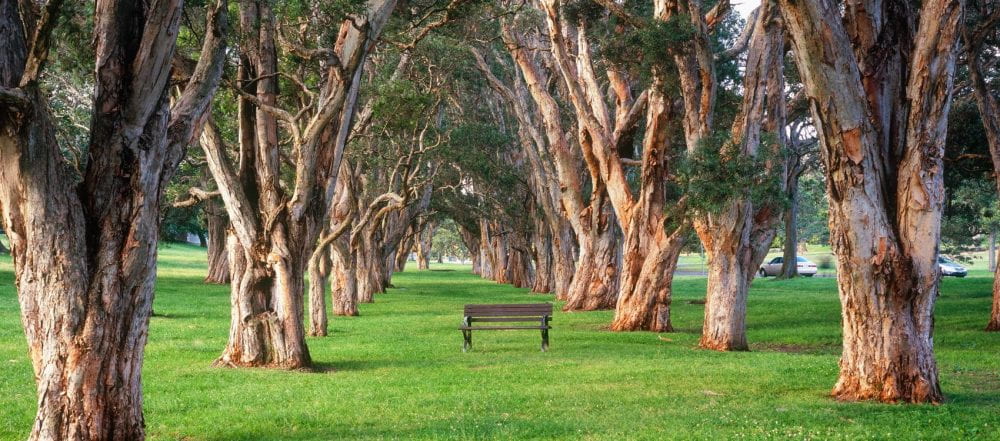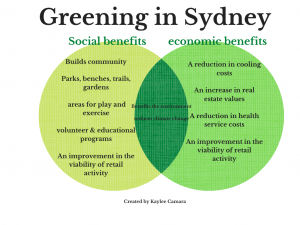The process of greening involves multiple steps from multiple different departments. There is an intense amount of collaboration involved in order to have a successful greening plan for an urban city. The following is a summarized and compacted version from Sydney’s Greening Plan on what needs to be done and the key undertakings the Plan follows.
The 3 Major Steps Needed for a Successful Green Space:
-
- The first step is conducting research on the land itself, which involves the consideration of the cities current situation in terms of urban ecology, land available, canopy cover, and heat island impact. In my interview with Senior Planner, Wade Reynolds, he stated “The first step is identifying lands that are most in need of conservation and have the most conservation value. We do have a series of things for purchasing new lands, number one, whether they can make a deal, but number two, is there a conservation value to that land? or whether for water resources or is it adjacent to quickly developing areas? That’s a big challenge is trying to keep up with the development when you’re doing all of that research and you know, the land costs, of course, increase with that pressure, but they do a lot of programming, surveys and other things.” Based on his response, it can be concluded that there is a lot more behind greening and green space planning than one would think. There are a lot of environmental concerns and considerations to research before the human planning part comes into place.
-
- The second step is planning the infrastructure and coordinating what goes into the space. Deciding on what to put and where to ensure space for trees, landscape treatments, and water-sensitive urban design. The city then outlines an action plan to allow implementation of a works program to ensure projects are prioritized and strategically planned, with cross-collaboration between City departments. City departments such as Parks and Recreation, Conservation, Transportation, and other committees, agencies, and councils are all in the collaboration process. This step includes the planning of providing space for pedestrians, cycle ways, recreation, and sport on top of the wildlife and environmental concerns.
- The third step is engaging the community and deciding on what the city needs and wants most. Senior Planner, Wade Reynolds, stated: “I think trying to align the programming with what the interests of the neighborhood areas best as possible is the best form of influencing community engagement.” Finding out what the community wants and needs can be conducted in forms of paper or online surveys in order to receive feedback from everyone possible. Written surveys are often provided for equity concerns.


